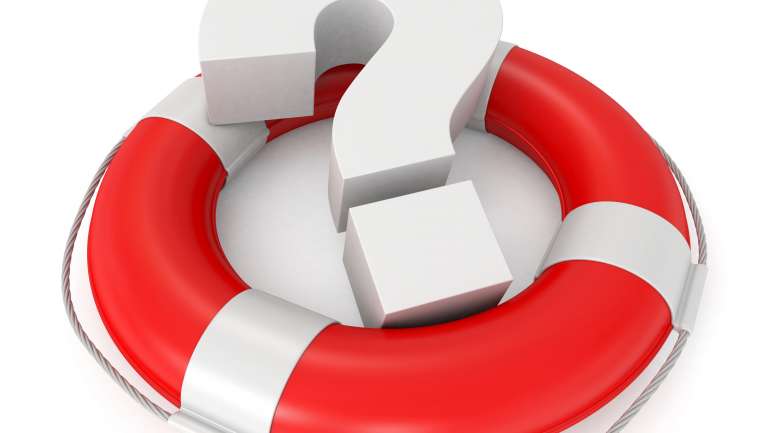This is a question I get asked ever so often. Clients, friends, family members, neighbors, everyone that knows what I do get around to asking me it at some point.
The truth is there is no simple answer to the question. It really depends on your circumstances, both now and in the foreseeable future, and it depends on why you want to buy a Life Insurance policy.
Business owners use Life Insurance to protect their businesses against creditors, provide for a buyout of shares, avail bank facilities, etc. In previous articles, I discussed Key Person Insurance and Partnership Insurance as two ways to do that.
Some people use Life Insurance as a savings and investments vehicle. Some people use Life Insurance as a means for wealth transference and wealth preservation.
But that’s a more complex discussion. Coming back to the question, and its most common context: when purchased for the purpose of securing the financial needs of your family and loved ones upon your death, how much Life Insurance should you ideally buy?
Is $500,000 enough? What is it meant to cover? Or is $3,000,000 a more realistic match for their needs? How many years, and what expenses should you consider when arriving at this number?
Here are a few key aspects to consider when it comes to deciding how much Life Insurance you need:
1. Income replacement
Perhaps the most important function of Life Insurance is to replace any loss of income of the deceased. When you consider buying a policy, one of your primary concerns would be to provide your family with enough to maintain their current standard of living, even without your income.
So if the deceased’s income was $30,000 per month, their Life Insurance should be able to replace a deficit of at least $360,000 per year for their family.
This is the ideal to aim towards if the mindset is to replace all your income. This may not, however, be the most viable option as it could prove costly to buy that much cover.
A more realistic approach to this may be to replace your regular monthly expenses and then some – just enough to ensure you’ve covered any unforeseen expenses and perhaps even to create a buffer against inflation.
Let’s assume that this is $20,000 per month or $240,000 per annum. This is a good base to start from, but you might also want to take into consideration large future expenses like costs of higher education for one or more of your children, purchase of a house (assume this is $500,000), repayment of any debt or liability, etc
If you think that your dependents are financially savvy and can net a return of 7% per annum from an investment vehicle then the required Life Insurance cover may be around $4,000,000
Here’s how I arrived at that figure:
$240,000 / 7% = $3,500,000 (approximately)
$500,000 Cost of procuring a house
Total cover requirements is $3,500,000 + $500,000 = $4,000,000
However if you think that your dependants aren’t financially savvy or may only consider getting a secure return on investments of 2% per annum then the calculation may look something like this:
$240,000 / 2% = $12,000,000 (approximately)
$500,000 Cost of procuring a house
Total cover requirements is $12,000,000 + $500,000 = $12,500,000
A common strategy, and one that many people take to, is to multiply your annual income by ten and use that figure as a basis for what your Life Insurance cover should be.
This may not always be the right way to go about things if you are a sole breadwinner or have dependents banking on you. Consider diving deeper into the calculation.
2. Loans and liabilities
If you have any long term liabilities and loans that have not been covered by some other form of insurance, these need to be taken into consideration, too.
Going back to our previous example, if you have, say a $400,000 loan, then your total insurance cover should be $4,400,000 (4,000,000 + 400,000).

3. Tax liabilities
Tax can become a burden to bear well beyond your grave – it’s one that can weigh your heirs down significantly if you don’t think it through.
Property taxes can be exorbitant in some countries, so it’s best to account for them in the life insurance policy so as to not leave your dependents with the massive liability of having to pay estate taxes on what they inherit.
Families have had to sell their homes, businesses, and assets simple to pay back the huge tax bills that come up as inheritance or estate taxes after the deceased leaves them a hefty inheritance.
4. Estate equalization
I’ve written about Life Insurance and estate equalization in a previous article, although that was aimed towards stepfamilies.
For a quick and simple explanation: when you want to leave your assets behind to multiple heirs, Life Insurance can help balance out the assets so you don’t have to dissolve or sell parts of your estate to pass on fairly divided inheritances.
If you are, in fact, using your Life Insurance as a tool to balance out your estate, then how much cover you need would depend largely on the deficit in your inheritance that you want to balance out.
These are just a few key aspects to take into consideration when arriving at the right figure for the amount of cover you should buy. There are, however, a lot of other variables that can affect that figure, and those numbers might change over time.
Your property might appreciate or depreciate, affecting the associated taxes. Your loans and liabilities might change as well, as will your income.
While you can always jump online and get a quick rough estimate with a Life Insurance calculator like this one on my website, to truly arrive at this figure, have a Life Insurance advisor take a look at your finances, your financial goals, and objectives and then devise the right cover and the right type of policy for you.

